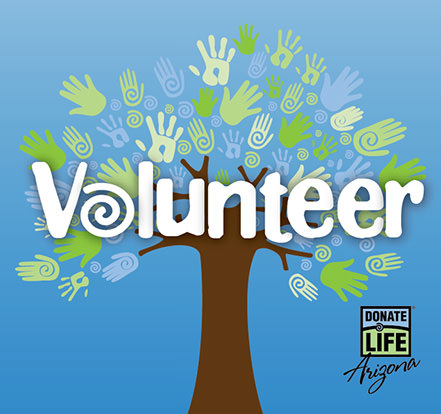Our media kit provides basic and updated information for media interested in donation and transplantation and learning more about Donor Network of Arizona (DNA).
For questions or to request additional information, please contact our media relations coordinator, Nico Santos, at 602-222-2494 or Nico.Santos@dnaz.org.
How Donation Works
DNA is able to connect the generosity of Arizona donors with those in need of lifesaving and life-healing gifts through careful coordination with Arizona hospitals and other organizations that work with patients and their loved ones at the end of life. The donation process begins with a referral call notifying DNA of a patient’s death.
At the time of the referral call, a donation specialist will work closely with the person making the referral to determine what organs and tissues may be possible for donation and transplantation. A patient’s donor registry status is also verified at this time.
If the patient has made the choice during his or her lifetime to register as an organ, tissue and eye donor, our team counsels and supports the donor’s family as we honor the donor’s decision to share life. If the patient has not made a decision, the patient’s family is invited to make the choice about donation on their loved one’s behalf.
Once donation is authorized, but prior to recovery of organs, eyes and tissues, additional information is gathered and tests are conducted to ensure that donated organs, eyes and tissues are safe to transplant. During this time, surgical recovery is scheduled.
Organ recovery takes place in an operating room at the donor hospital. Organs are recovered in a surgery, generally from the hospital that will be transplanting the donor organ(s). The donated organs are then transported to the hospital where the transplant will take place.
Tissue and eye donation may take place at the hospital, the medical examiner’s office, at DNA’s surgical recovery suite or a funeral home (for eye donation only). Recovery must take place within 24 hours after a patient has died. Corneas and sclera (from the eye) are distributed from DNA directly to ocular surgeons. Donated tissue is sent to partner organizations that prepare the tissue for transplantation.
Following donation, DNA offers support for donor families who have been part of the generous decision to share life with others through the gift of donation. Our support spans at least two years and includes written correspondence and events held to honor donors and their families.
Language
To show respect for donors, their families and the life-saving and life-healing gifts they have shared with others, DNA uses specific language when discussing organ, tissue and cornea donation.
Below is a list of the sensitive language that DNA encourages media to use when sharing stories about donation:
Yes
Donor
Deceased donation
Recover
Restoration
Ventilator
Donation/gifts
No
Cadaver
Cadaveric donation
Harvest
Reconstruction
Life support
Parts

